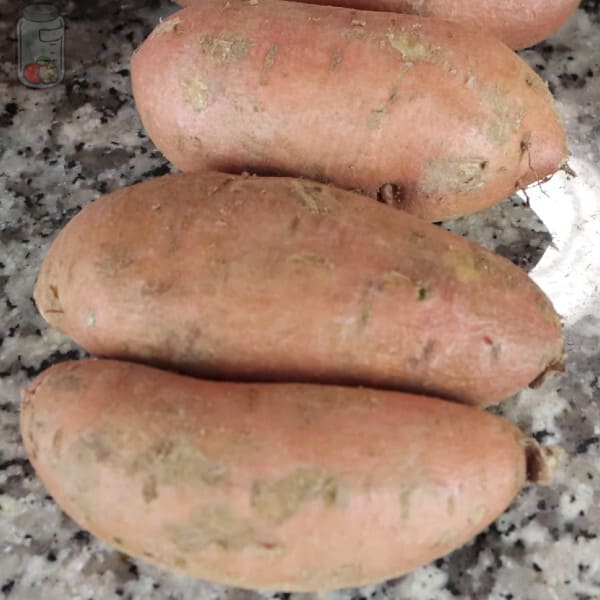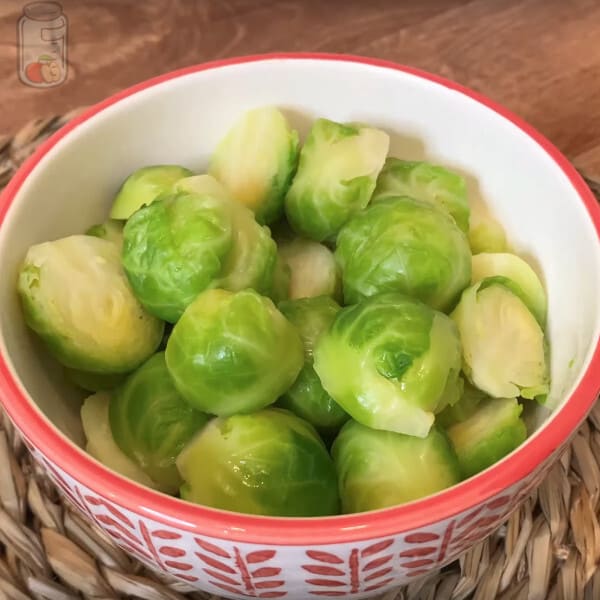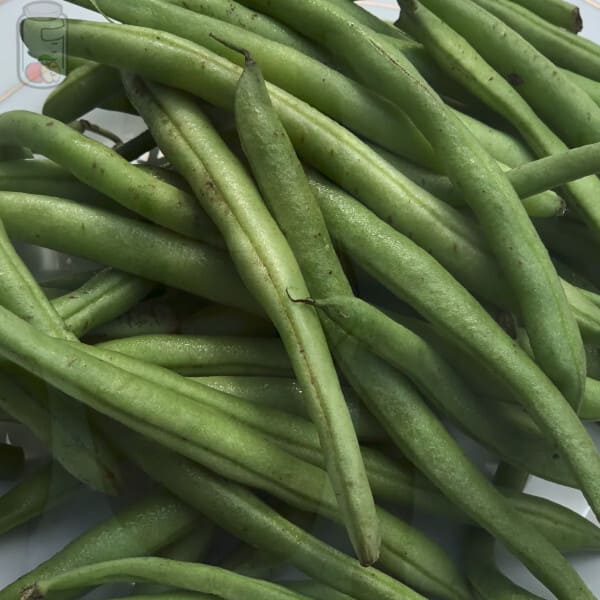The tomato is a highly versatile fruit or vegetable. In addition to the fact that we can eat it raw in a salad or use it to make juice, you can also cook and prepare rich sauces, giving me enough clues to prepare this guide where I will teach you how to store tomatoes properly.
Tomatoes at room temperature can be kept in good condition for 2 to 5 days, depending on how ripe they are. Inside the fridge, they can last a week while in the freezer for about two months.

If you would like to learn how to preserve tomatoes in the right way, just read on.
How to choose tomatoes that last longer
Tomatoes are an essential ingredient in our kitchens since we use them for many recipes, reason why we usually buy them in large quantities. However, there is always some no that decomposes before others.
That is why I’ll give you some tricks to select the best tomatoes and the ones you should avoid.
When you go shopping at your favorite supermarket or grocery store, you must look closely at the conditions of the tomatoes. Ripe tomatoes are entirely red and with shiny skin, without any wrinkles or folds. They should also feel firm, although a little soft to the touch.
So, avoid buying incredibly soft tomatoes with wrinkled skin or, worse, that are moist and somewhat viscous. Although this does not mean they are bad, they will not last more than a day in your house unless you use them soon, preferably to prepare some sauce.
Another point to consider is that you have to choose some tomatoes that are not fully ripe, which are the ones with greenish spots.
Store tomatoes at room temperature
Many people prefer to leave their tomatoes in a basket in their kitchen to serve as an ornament, but unfortunately, in this way, they will not last long and will attract the attention of flies and insects.
To store your tomatoes at room temperature in the right way, the first thing you should keep in mind is that you should not wash them.
You can remove dust or sand on them with a clean, dry cloth or paper towel. Then, put them in a basket or container that is not very deep, and do not stack them since the weight will end up crushing those below as the days go by.
A tip I can give you to extend their shelf life is to avoid placing the ripe tomatoes with the stem down, or they will soften and rot faster.
Finally, cover the basket with a clean kitchen cloth or tea towel, and store it in a dark window, such as the pantry, which is also free of moisture and not near heat-emitting appliances.
In this way, ripe tomatoes will be kept for 2 or 3 days, while those that need to ripen may be ready in 3 to 5 days. [1]
If you are wondering how to ripen green tomatoes, the answer is simple:
- Step 1: Wrap each green tomato.
Use paper towels to wrap each of the green tomatoes.
- Step 2: Put the tomatoes in a basket or bag.
Since tomatoes need to breathe, you should put the green tomatoes in a basket or container that is not very high. You can also use a paper or plastic bag (with the latter, you will have to make some holes in it).
Something that will help you speed up the ripening process is to put the green tomatoes with the stems down.
- Step 3: Store the green tomatoes in a dark place.
The place where you put the green tomatoes must be, in addition to dark, fresh, and free of moisture. This way, the green tomatoes will have fully ripened in a month. But I advise you to review them every week to see their progress.
How to keep tomatoes in the fridge
The cold environment provided by the fridge causes the tomatoes to stay for a little longer. To store them correctly, I do not recommend washing the tomatoes either; remove the dust with a cloth or paper towel.
Then put them inside a container with a lid or a paper bag, although you can also use a perforated plastic bag.
Try not to pile tomatoes on each other to prevent them from crushing those at the bottom. And put them in the vegetable drawer or a not very cold area (avoid the bottom). So you will keep the tomatoes for 5 to 7 days inside the fridge.
If you have chopped several tomatoes and have leftovers, put the chopped tomatoes in an airtight bag or container, then put it in the coldest part of the fridge for up to 3 days (the bottom).
How to freeze tomatoes
Can tomatoes be frozen? Yes, you can freeze whole tomatoes or in pieces. However, you have to consider that they will be soft when thawing, so you can no longer use them as if they were fresh tomatoes.
To proceed with freezing, follow these indications:
- Step 1: Wash the tomatoes.
On this occasion, it is convenient to wash the tomatoes. However, do not use a bowl with water and leave them soaking because the tomatoes will be able to absorb the contaminant that remains in the water.
So better wash them under the tap water or soak a kitchen cloth and rub the tomatoes. Then dry them with paper towels. Also, do not freeze very watery tomatoes with super soft parts.
- Step 2: Cut the stem part.
Remove the top of the tomatoes, where the stem is, with a knife. And if you want to freeze it into pieces, you can chop it into slices or quarters.
- Step 3: Perform first freezing.
Put parchment paper or a nonstick sheet on the tray, then arrange the whole tomatoes leaving space between them and freeze for 5 hours. Skip this step if you chopped the tomato.
- Step 4: Put the tomatoes in a bag or container to freeze.
It would help to put chopped tomatoes inside small airtight freezer bags since it is more practical to defrost what will be needed.
You can put frozen whole tomatoes inside a somewhat larger airtight bag or container.
- Step 5: Label the bag.
Write the storage date on the bag or attach a label to the container.
- Step 6: Store the tomatoes in the freezer.
In this way, the tomatoes will remain frozen for two months.
How to preserve cooked tomatoes?
In case you have cooked tomatoes and have not used everything (regardless of whether you just boiled them, made them in a sauce or a puree), you can store them as follows:
- Step 1: Wait for the tomatoes to cool.
Before pouring it into a container, it is advisable to wait for the cooked tomato to cool completely.
- Step 2: Put the cooked tomatoes in an airtight container or bag.
The container can be made of glass or plastic but must have an airtight lid. Or you can use an airtight bag. If you are going to freeze it, it is best to avoid glass.
- Step 3: Label the container.
If you are going to freeze them, you should put the storage date on the bag or container.
- Step 4: Save the cooked tomatoes.
You can store cooked tomatoes for 3 to 5 days in the fridge, while in the freezer, they will last about 10 or 12 months.
How to dehydrate tomatoes?
Dehydrating tomatoes is an excellent way to extend their shelf life, enhancing their flavor.
If you plan to do this, I advise you to use the types of tomatoes that have more pulp; although any kind of tomato works, be sure to remove the gel that covers the seeds.
- Step 1: Wash and chop the tomatoes.
Wash tomatoes under tap water. Then, cut the top of the stem, and chop it in half or quarters if it is substantial.
Remember to get rid of the seeds and gel that cover it.
- Step 2: Dehydrate the tomatoes.
Because of the high-water content of tomatoes, I do not recommend that you dehydrate them in the oven because it would take 6 to 10 hours, depending on how thick the tomatoes are.
But if you opt for this method, put the oven at the lowest possible temperature. Place the tomatoes on a tray with baking paper or a nonstick sheet.
Check the condition of tomatoes every two hours but stipulate that it should take about 6 to 10 hours to dry completely. You will know that tomatoes are well dehydrated when they are wrinkled, firm, and not at all stickies.
If you have a food dehydrator, adjust the temperature to about 60°C (140°F), then arrange the tomatoes equally with the skin on the grid, leaving some space between them. It should take about 12 to 18 hours to be ready.
- Step 3: Pass the dried tomatoes to glass jars.
Please wait until the tomatoes are cold before storing them in glass jars with an airtight lid.
- Step 4: Label the container.
Please write down the storage date on a label and stick it to the bottle.
- Step 5: Store in a dark, dry place.
Place the dehydrated tomatoes in a moisture-free place, cool and dark, so that they will remain for an entire year. To rehydrate them, immerse them in hot water for 15 minutes or 1 or 2 hours if you use cold water. [2]
You can also dip these dehydrated tomatoes in oil to provide much more flavor thanks to spices (such as garlic, peppercorns, and basil), although it will reduce their shelf life.
For example, you can boil the dehydrated tomatoes for 20 minutes, drain them, dry them with paper towels, and crush the garlic. Of course, you also need a glass jar (where you will store the tomatoes).
Put a little oil in the jar to cover the bottom, add a layer of tomato and another of spices and crushed garlic, add oil again, and so repeat until you fill the jar. Cover well and store in the fridge for 1 to 2 weeks.
How to make canned tomatoes?
Canned tomatoes are a tomato sauce or at least a base to prepare a sauce, which, if you store it correctly, will last you a year. You will need these ingredients:
- 2 kg (70.5oz) of ripe tomatoes.
- 1/2 teaspoon dried oregano.
- The juice of one lemon.
- 30ml (1oz) of oil, preferably olive.
- 1/4 teaspoon sugar.
- 1/2 teaspoon salt.
Now you just have to do what I indicate below:
- Step 1: Sterilize the glass jars.
To store the canned tomatoes, you must use jars or glass jars with screws or an airtight lid, which must be clean and properly sterilized.
To do this, put them in a pot with water (with their lids) and boil for 15 minutes. Once this time has elapsed, remove them with tweezers carefully, and put them on a rack to drain and dry.
- Step 2: Wash and peel the tomatoes.
Wash the tomatoes with plenty of water and peel them. You make a crosscut with a knife at the base, then immerse them in hot water for a minute or two, and you will see how simple it will now be to remove the skin. After this, chop them into squares.
- Step 3: Cook the chopped tomatoes.
Bring a pot over medium-low heat and cook the chopped tomatoes for 30 minutes. After this time, add the oil, salt, sugar, and spices as oregano, and cook for about five more minutes.
- Step 4: Crush.
Please wait for this sauce to cool down and put it in a food processor or blender. It will depend on your taste if you want it like a sauce or with small pieces.
- Step 5: Pass the sauce to the jars.
Add lemon juice to the jars you use and pour the sauce without filling it completely. And cover well.
- Step 6: Perform the sealing.
In a large pot, put a clean tea towel on the bottom. On this cloth, arrange the jars well to prevent them from colliding with each other or the pot when boiling.
Add water to cover the jars, turn on the fire and when it starts to boil, wait about 20 or 30 minutes for the sealing with the pressure. After this time, turn off the fire and wait for the water to cool before taking out the jars.
- Step 7: Let stand.
When the water cools, take out the jars and leave them on a table or countertop until they cool completely, which can take about 6 hours.
- Step 8: Write the storage date.
When the jars are cold and dry, attach a label with the storage date.
- Step 9: Store the canned tomatoes.
Store the jar with the canned tomatoes in the coldest part of the fridge. If kept closed, they will remain for 8 to 10 months, while uncovered for about 2 or 3 months.
You can also freeze it. Pass the canned tomato to an airtight bag or container suitable for the freezer, and it will be 12 to 18 months.
How do you know if tomatoes got bad?
Tomatoes that spoiled will have these characteristics:
- Rancid smell.
- Incredibly soft texture (it is easy to make holes with your fingers).
- White or black spots or lint (mold).
- Bad taste.
Why do tomatoes spoil?
Like any other fresh fruit or vegetable, tomatoes can become contaminated with bacteria from soil, water, or animals when they have not yet been harvested.
People can transfer the bacteria present in the skin of the tomato to its pulp during cutting or slicing or when left to soak since the stem can absorb water.
These bacteria accelerate the process of natural decomposition because they feed and reproduce in the tomato, making it an unsafe food to eat.
In addition, given the high amount of water in the tomato, mold develops easily and quickly. Also, like most fruits, the tomato will continue to mature unless this process is stopped by keeping it cold or cooking it.
How long do tomatoes last?
| Product | Duration |
| Green tomato at room temperature | 1 month |
| Tomato almost ripe at room temperature | 3 – 5 days |
| Tomato fully ripe at room temperature | 2 – 3 days |
| Ripe tomato in the fridge | 5 – 7 days |
| Chopped tomato in the fridge | 3 days |
| Tomato (whole or chopped) frozen | 2 months |
| Cooked tomato in the fridge | 3 – 5 days |
| Cooked tomato in the freezer | 10 – 12 months |
| Dehydrated tomato at room temperature | 1 year |
| Canned tomato in the fridge (sealed) | 8 – 10 months |
| Canned tomato in the fridge (opened) | 2 – 3 months |
| Canned tomato in the fridge | 12 – 18 months |
What is the best way to preserve tomatoes?
Well, it depends on the use you want to give the tomatoes. Fresh tomatoes can last a few days at room temperature but putting them in the fridge is better to extend their duration a little more.
If you want them to last a long season, then freezing the tomatoes is the best thing you can do, although they will not have the same consistency afterward as when they are fresh.
With cooked tomatoes, either in sauce, mash, or juice, you should keep them cold all the time so that they do not spoil quickly. In addition, there are other ways to take advantage of tomatoes that will make them last a long time, like canned tomatoes.
To know how to preserve some other food, just check the following posts or use the search bar since this website has the most extensive list of topics related to the preservation of products and foods.
[1] https://escholarship.org/uc/item/25h4j4p1
[2] https://foodbanksbc.org/wp-content/uploads/2014/12/Food-Storage-Guidelines3.pdf






